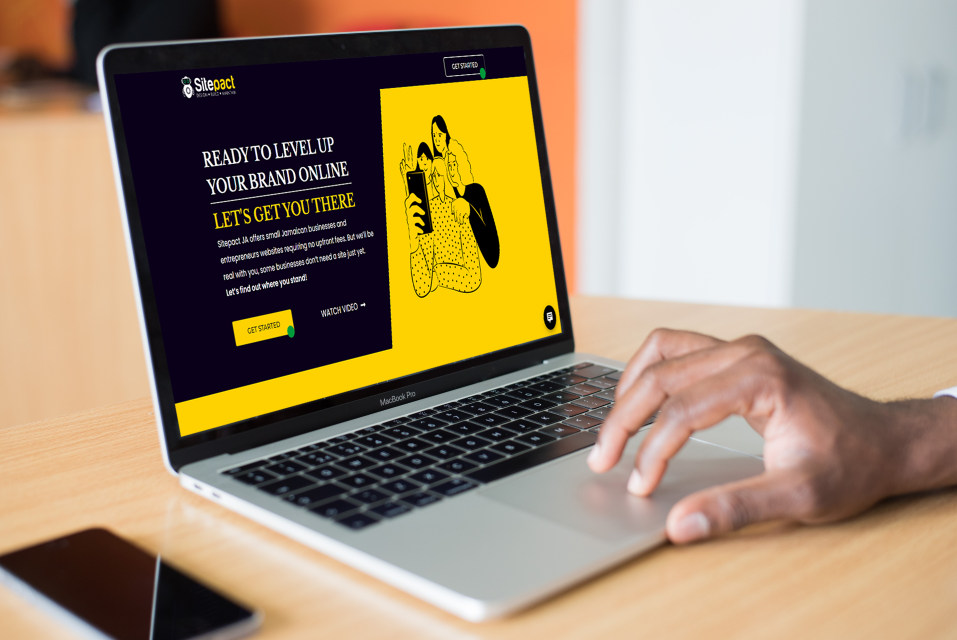Whether you’re an entrepreneur, a marketer, or a small business owner, one of the most powerful tools you can use to generate leads, drive sales, and achieve specific marketing goals is the landing page. Unlike a general website page, a landing page has a single, focused purpose. It’s carefully designed to guide visitors toward one clear action, whether that’s subscribing to a newsletter, registering for an event, downloading a resource, or making a purchase. Because of its simplicity and focus, a well-optimised landing page can have a significant impact on your marketing campaigns.
This guide will walk you step-by-step through what landing pages are, why they matter, and how to design one that delivers measurable results.
Table of Contents
What is a Landing Page?
A landing page is a standalone web page created specifically for a marketing or advertising campaign. Its purpose is to encourage visitors to complete one specific action, often referred to as a call-to-action (CTA). Unlike a homepage or service page, which offers general information and multiple navigation options, a landing page eliminates distractions. It has no extra links or unrelated content, ensuring that visitors focus on the single goal presented to them. This simplicity is what makes landing pages so effective for conversions, the process of turning visitors into leads or paying customers.
Why Landing Pages Matter
Landing pages play a vital role in digital marketing. Here are some key reasons why they should be part of your strategy:
Increased Conversions
A landing page removes unnecessary distractions, which increases the likelihood of visitors taking the desired action. By giving them only one option, you reduce decision fatigue and guide them directly toward your goal. This is why landing pages consistently have higher conversion rates than regular website pages.
Targeted Messaging
Every campaign is unique, and a landing page allows you to tailor the message to a specific audience. For instance, you might create one page for people interested in a free trial and another for those ready to purchase. By addressing the audience’s needs directly, you increase engagement and relevance.
Performance Tracking
Landing pages make it easier to measure campaign success. By connecting a landing page to analytics tools, you can track important data such as:
- Click-through rates
- Conversion rates
- Cost per conversion
- Return on investment (ROI)
This level of insight helps you make informed decisions about future campaigns.
Cost-Effectiveness
When running paid advertising campaigns, every click costs money. Directing visitors to a targeted landing page ensures you get the most value for your budget. A highly optimised landing page can turn ad clicks into real leads or sales, maximising your return on ad spend.
Steps to Creating an Effective Landing Page
Building a high-performing landing page requires strategy and attention to detail. Below are the essential steps beginners should follow.
Step 1: Define Your Goal
The first and most important step is to determine exactly what you want visitors to do. Without a clear objective, your landing page will lack focus and confuse users.
Common landing page goals include:
- Signing up for a free trial
- Purchasing a product or service
- Downloading a free resource, such as an e-book
- Registering for a webinar or event
Once your goal is defined, every element on the page, from the headline to the CTA button, should support this objective.
Step 2: Understand Your Audience
To create a landing page that truly connects with your visitors, you need to understand who they are and what motivates them.
Consider these factors when defining your audience:
- Pain Points: What problems or challenges do they face?
- Solutions: How does your offer solve these problems?
- Stage in the Buyer’s Journey: Are they just learning about your brand, or are they ready to make a purchase?
The better you understand your audience, the more tailored and persuasive your landing page will be. When visitors feel like the page speaks directly to their needs, they’re more likely to convert.
Step 3: Craft a Compelling Headline
Your headline is the first thing visitors will see, and it plays a crucial role in keeping them engaged. A weak headline can cause visitors to leave immediately, while a strong one will grab attention and encourage them to stay.
A great headline should be:
- Clear and concise: Avoid complex terms and get straight to the point.
- Benefit-driven: Highlight what the visitor will gain by taking action.
- Attention-grabbing: Make it compelling enough to spark curiosity or excitement.
Think of your headline as the gateway to your landing page. If it doesn’t capture interest, the rest of the page won’t matter.
Step 4: Design with Simplicity
The design of your landing page should be clean, organised, and free from clutter. A complicated layout can confuse visitors and distract them from your main goal.
Key design principles include:
- White Space: Use plenty of breathing room to make your content easy to digest.
- Visual Hierarchy: Arrange elements so that the most important information stands out.
- Contrasting Colours: Make CTAs stand out by using colours that grab attention.
- Mobile Optimisation: Ensure your page looks and functions perfectly on smartphones and tablets.
A simple, user-friendly design keeps the focus on your message and CTA.
Step 5: Include a Strong Call-to-Action (CTA)
The CTA is the most important element of your landing page because it tells visitors what to do next.
Tips for creating effective CTAs:
- Use action-oriented language, such as “Get Started Now” or “Download Your Free Guide.”
- Make the button visually distinct with a contrasting colour and a size that draws attention.
- Place CTAs strategically, such as near the top of the page and again near the bottom.
The CTA should be clear, direct, and closely tied to the goal of your page.
Step 6: Use Trust Elements
Before taking action, visitors need to trust your brand. Adding credibility-building elements can reduce hesitation and encourage conversions.
Examples of trust elements include:
- Customer testimonials or reviews
- Certifications, seals, or awards
- Security badges for payments or data protection
- Clear privacy policies
These elements provide reassurance that your offer is reliable and safe.
Step 7: Optimise for Speed and Mobile
If your landing page loads slowly or doesn’t work well on mobile devices, you risk losing visitors before they even see your content.
To optimise performance:
- Compress images to reduce file sizes.
- Use a responsive design so the page adjusts seamlessly to any screen size.
- Minimise unnecessary scripts and plugins that slow down load times.
A fast, mobile-friendly page creates a positive user experience and improves your conversion rate.
Step 8: Test and Improve
No landing page is perfect on the first try. To maximise results, you need to test and refine over time. Use A/B testing to compare different versions of your landing page. Test elements such as:
- Headline wording
- CTA placement and colour
- Page layout
- Copy length
Track key metrics, including:
- Conversion rate
- Bounce rate
- Average time spent on the page
Continuous improvement ensures your landing page stays effective and aligned with your audience’s needs.
Conclusion
Creating an effective landing page requires a clear understanding of your goals, your audience, and how to guide visitors toward taking action. By defining a single objective, crafting a compelling message, designing with simplicity, and continuously optimising, you can create landing pages that drive measurable results. Remember, the process doesn’t end once your page goes live. Regular testing, tracking, and updates are essential for long-term success. With dedication and attention to detail, even beginners can master the process and create landing pages that turn visitors into loyal customers.



